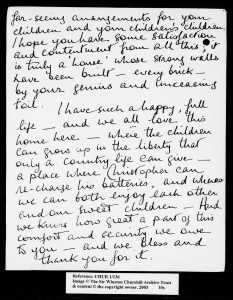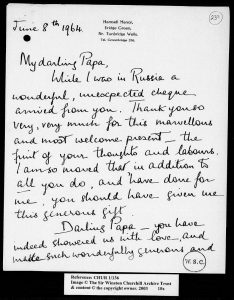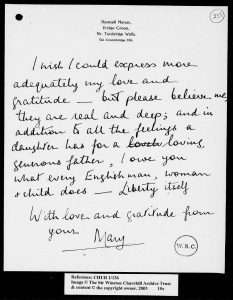
Finest Hour 174
Chasing Churchills Across the Atlantic
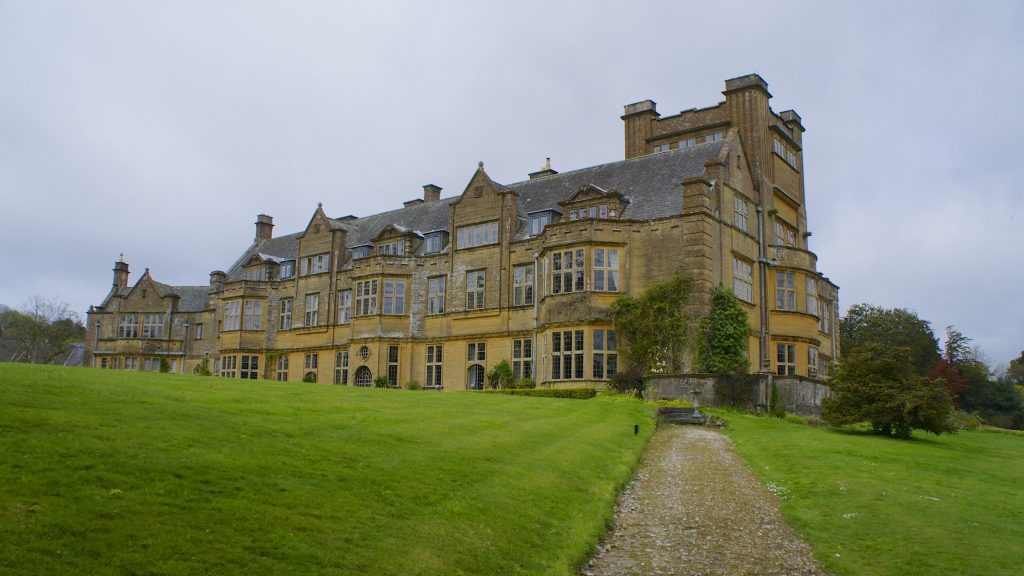
December 18, 2016
Finest Hour 174, Autumn 2016
Page 14
By Elizabeth Churchill Snell
Elizabeth Churchill Snell is the author of The Churchills: Pioneers and Politicians —England, America, Canada (1994).
When I was a very young girl in Nova Scotia and first learned the name of my grandfather Churchill, it seemed to be all over the radio. But I did not know what the word “war” meant, and neither did I know that chasing the Churchill name would become a lifetime’s preoccupation.

2024 International Churchill Conference
My mother was the last in a direct line of ten generations of Churchills in North America that originally came from Dorset. The first generation settled in the Plymouth colony around 1643. Subsequently, the family moved to Nova Scotia in 1762. A great-grandson of the first Nova Scotian Churchill settler, Lemuel, later moved from Chebogue Point near Yarmouth to Hantsport.
The Nova Scotian Churchills were shipbuilders in the age of sail and wood. Ultimately, they had one of the larger fleets in the world. As evidence I still have a closet filled with china and dolls brought back to my mother from the four corners of the earth. Besides shipbuilding, my great-great-grandfather Ezra became a member of the first legislature in Canada and later was appointed a post-Confederation senator in Ottawa about 1867.
My mother’s father, Randolph Winston Churchill, the one whom I had thought was all over the radio, joined the Canadian army in 1914. He was commissioned in the 112th Battalion and then sent to France, having requested reversion in rank to get into the fighting. He found it and was wounded several times but survived through to the Armistice. Sadly, I never knew him.
Somewhere beyond the Sea
From early on, I found all of this fascinating. It made me a precocious reader, researcher, and writer to such an extent that my parents sent me to a college in Missouri to study drama and journalism. At the end of my first year, I was offered the opportunity to audition at the Royal Academy of Dramatic Arts in London. I went, I acted, I was accepted, I declined.
Perhaps it was because I was homesick and wanted to continue my studies closer to home, which I did, but perhaps it was also because there had been a marvellous little drama on the small ship on which I sailed to Britain. My sister and I were standing together on the deck deeply engrossed in a little notebook in which we were writing when a gentleman spoke to us: “Would you two young ladies consider it impertinent—I’ve walked past you several times—if I asked you what you are doing?” “Not at all, sir,” we replied, “we just are starting to write a book. Perhaps you would like to put your name in it.”
Just like that we had the autograph of the famous Newfoundland Premier Joey Smallwood, who at this time was deep in the throes of consulting with Winston Churchill regarding the creation of the British Newfoundland Development Corporation, which was modelled along the lines of the ancient East India and Hudson Bay Companies. Later, after Churchill died in 1965, Smallwood had the corporation’s hydroelectric-power structure in Labrador re-named Churchill Falls.
Once we were happily ensconced in London, the first place we visited was the House of Commons, hoping Sir Winston would be there. We were told he was sitting in his usual seat below the gangway. On this first visit, we did not hear him speak, but we prayed that in time we would be rewarded.
Fulfillment
In time, as it turned out, I married James Snell, whose own family had also emigrated from Britain to North America. This sealed it. I determined to become an authority on the British Churchill family and thence to draw the North American line ineluctably into the fold.
James was in the business of exporting housing materials and was taken under the wing of Donald Smith, Agent General for Nova Scotia in London. Smith found us a site in Devon for which architectural plans had been drawn prior to the war. We were told if we adhered to the original plans, we could build.
Most of the time James would be back either in Canada or in his other offices overseas while I, alone in Devon, worked on my Churchill family history book. What bolstered me was a handwritten letter I received in June 1991 from Martin Gilbert, Churchill’s official biographer. “I had to start my research Nov. 1874 and eschew the many temptations to wend my way backwards,” Gilbert wrote, “so although I can be of no service to you, I would indeed love to continue to learn of your discoveries.”
As I was beginning to complete the manuscript, however, I began to worry. How to publish? Would I not be turned down because most of my subject was not in England? Who did I think I was anyway?
I inquired among the friends I had made in Britain as to what I should do. Nothing much happened for a while. Then one or two spoke to me about a well-known publisher who would be speaking on a particular night and suggested I attend. “But I hardly know where that is. Will one or two of you come with me?” “Sorry, we’re busy. We’ll draw a map for you.”
Fearfully I went, and, near tears, approached the publisher: “Sir, I am a Canadian, and I have been directed to you this evening because I have written a manuscript about the Churchill family. Do you think I could make an appointment to show it to you.” Charmingly, he replied: “I know, I’ve been told about you coming alone. Your friends wanted to know if you had the courage to accost me.” Success!
Before The Churchills: Pioneers and Politicians was published in 1994, my new friend had personally edited every word with me. There was a National Trust Estate book launch, BBC radio interviews all over the place, a ceremonial placing of a copy beside the books of my favourite historian, A. L. Rowse, in the Long Library at Blenheim Palace, and many similar ceremonies elsewhere, including the Imperial War Museum and the library of the House of Commons.
Invitations
Back in Nova Scotia that summer, I received an exciting phone call from Richard Langworth, President of the International Churchill Society, inviting me to speak in Banff along with the Society’s Patron Mary Soames. An invitation to appear with Sir Winston Churchill’s youngest child was not to be declined.
After that exciting event, I received my first handwritten letter from Mary. She was still writing me years later. In one letter, in which we were discussing videocassettes, she wrote: “But I was revolted by that old dodderer who appeared at the beginning of each episode with a boy asking him questions—apparently (the old d_ _ _ _ _ _ r) was meant to be WSC?! Well you could have fooled me.”
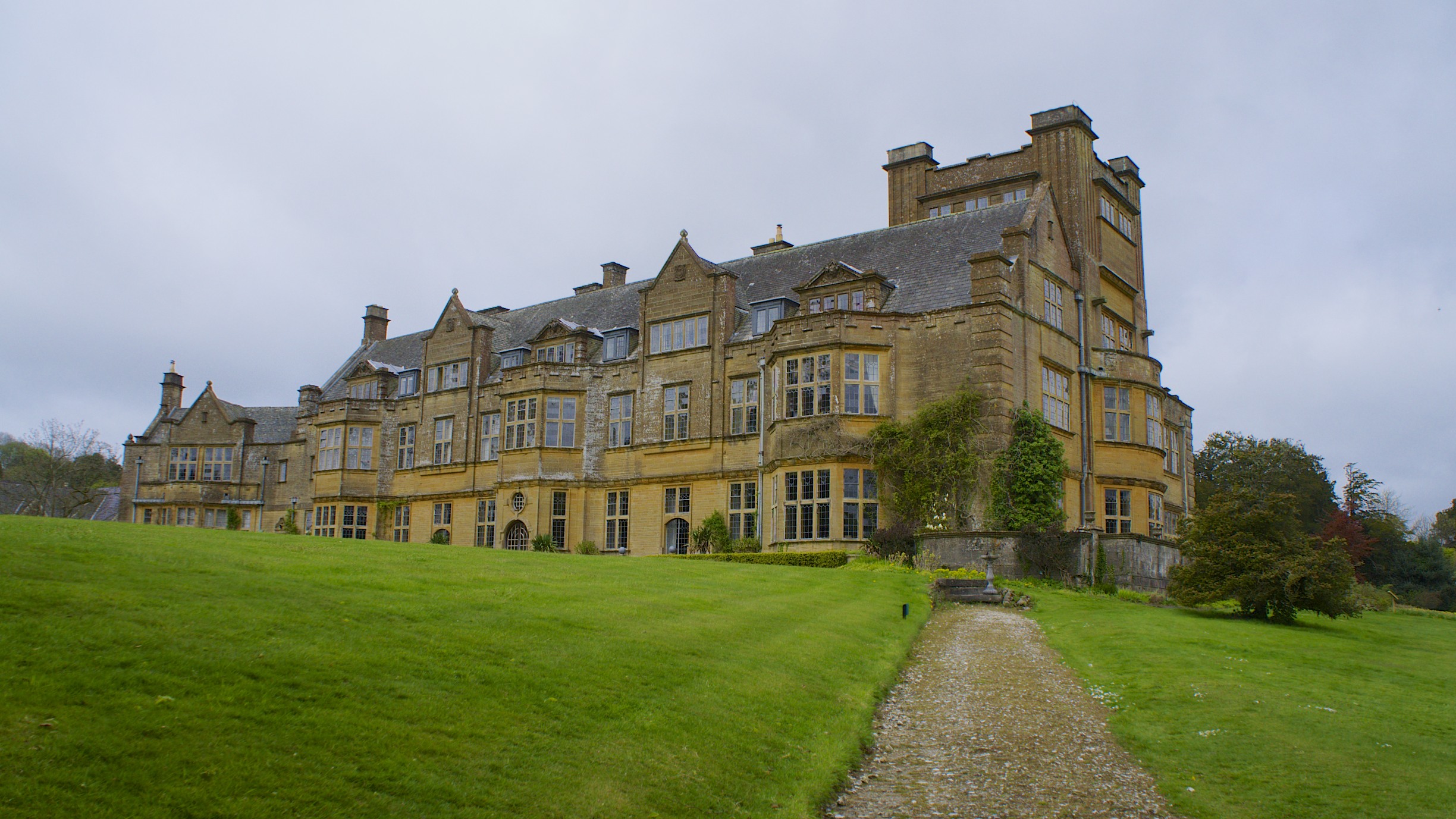 Minterne HouseAnd it was not the last that I heard from Richard Langworth either. He asked me to speak in Devon and Dorset about the Churchill family roots to be found there to a group of Churchillians visiting from North America. If I say so myself, and the packed crowd consistently did, the event was a success. However, the best success to come of this for James and me was our discovery of Minterne House, ancestral home of the Digby family.
Minterne HouseAnd it was not the last that I heard from Richard Langworth either. He asked me to speak in Devon and Dorset about the Churchill family roots to be found there to a group of Churchillians visiting from North America. If I say so myself, and the packed crowd consistently did, the event was a success. However, the best success to come of this for James and me was our discovery of Minterne House, ancestral home of the Digby family.
First we explored the original Churchill family house of Round Chimneys, a late Elizabethan manor house at Wootton Glanville (now Glanville’s Wootton) not far from the church in the Dorset village of Minterne Magna, which has several early Churchill family monuments. We then studied the history of the little church itself, and, finally, we inquired of Lord Digby.
Lord D was a love. He met my husband and me along with our daughter Jaime at Minterne House, which his family purchased in the eighteenth century. He rushed me to view the painting by Sir Godfrey Kneller, which he had long been trying to find, of General Charles Churchill, who had inherited Minterne in 1698 and was the younger brother of the first Duke of Marlborough. Lord Digby also showed me a copy of my book prominently opened on a table, as well as a flat that opened into the tapestry room.
I asked if the huge handworks went back to the time of Charles, and Lord Digby said he would search. I then replied: “If so, I want to come here.” James and Jaime later both laughingly told me, “That is not what you are supposed to say.” Before we had left, however, Lord Digby had showed me his private archives and the drawer where I could find its key.
Why so for all of this?
Lord Digby’s sister, Pamela, first had married Randolph Churchill, the son of Winston; he himself was very interested in my American and Canadian Churchill background, and Dorset was the place to research the Churchill family’s early history. In short, it was all very well with Lord Digby that Winston Churchill had been born at Blenheim, but he wanted to know about the family antecedents as well.
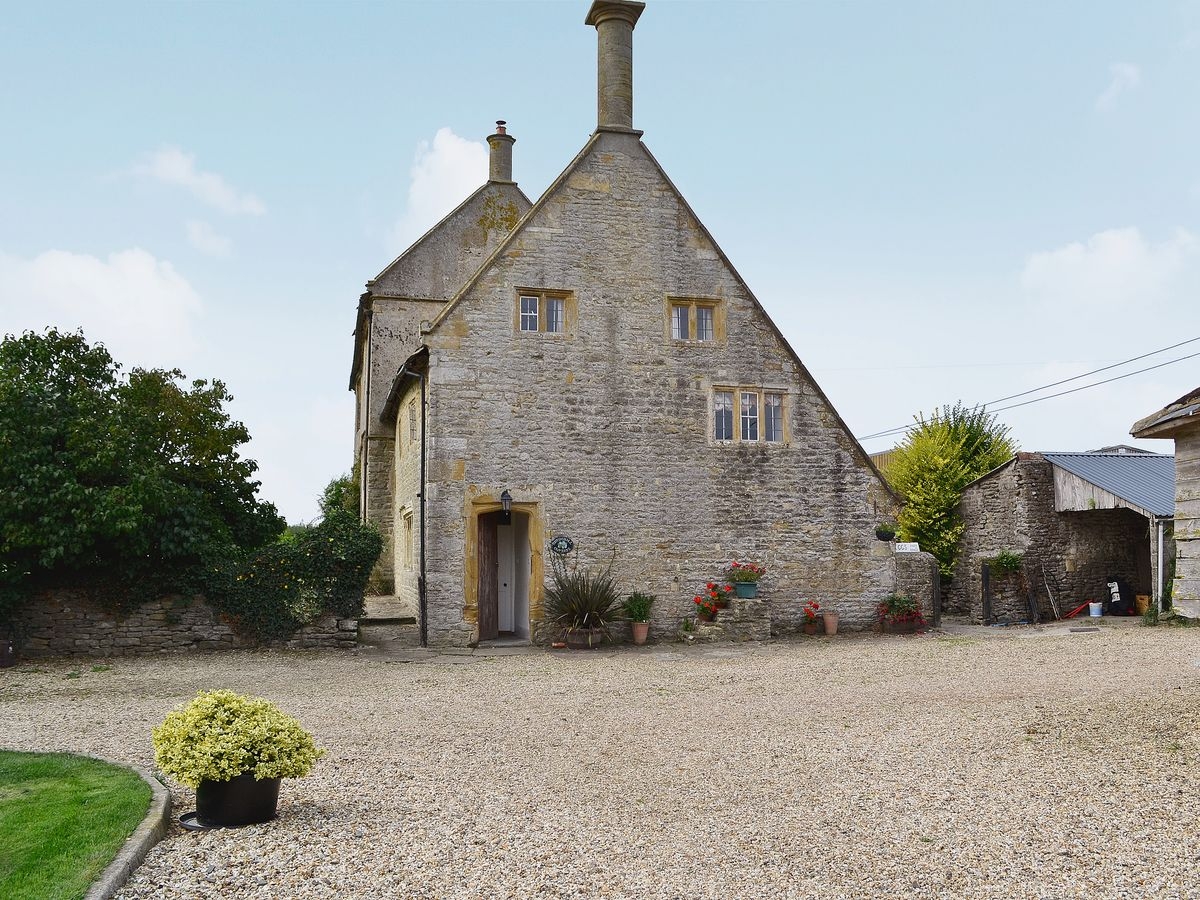 Round ChimneysBy 2005 James and myself were into our fifth year of leasing the divine flat at Minterne. I was starting to spread the story of the Hon. Charles Churchill and was very proud that the editors of the Oxford Dictionary of National Biography had changed their entry on Gen. Churchill, that extremely capable younger brother, to include my findings. I was also telling the story of the importance of the Minterne monuments.
Round ChimneysBy 2005 James and myself were into our fifth year of leasing the divine flat at Minterne. I was starting to spread the story of the Hon. Charles Churchill and was very proud that the editors of the Oxford Dictionary of National Biography had changed their entry on Gen. Churchill, that extremely capable younger brother, to include my findings. I was also telling the story of the importance of the Minterne monuments.
Departures
While we had made many friends in Britain, including various members of the Churchill family, James had begun to be ill. We returned home to Canada, and with heartbreak I asked Jaime to close out our beloved flat so I could always be with James.
After my book had been published, Richard Langworth had asked me to interview Peregrine Churchill, the second son of Winston’s brother Jack. For many years, Peregrine had been one of two trustees of Sir Winston’s Chartwell Trust. In fact he had been executor, trustee, or administrator of many family estates reaching back to those of his grandparents Jennie and Lord Randolph Churchill. Financially prudent, Peregrine through the years had shored up many family losses and loans.
More than that, it was Peregrine who personally transported many of his uncle’s archival papers to safekeeping during the war to the family’s summer home, Holworth House, on the Dorset coast. Educated at Harrow and Cambridge, Peregrine laughingly told me, “I shared digs on Jesus Lane with Victor Rothschild, father of Jacob. He kept me to work some of his differential equations.”
This had been about the time that James and I had moved to Minterne. Quite shortly afterward, Peregrine died. I tried to carry on with his charming French wife Yvonne, who had moved to London, but the book Peregrine had wanted me to write never got written.
New Directions
Although that book did not get written, thanks to Churchill Archives Director Allen Packwood, another one, Churchill Coffers, did. It consisted of ten chapters covering the Dorset origins of the Churchills down to Sir Winston’s namesake grandson. When Allen sent me a letter to say that the new book had been added to the Churchill Archives library, I wept. And how much better than three years of hard work lying around somewhere on shelves in bookstores?
To commemorate the fiftieth anniversary of Sir Winston’s death, I wrote a twenty-page booklet with the collaboration of Allen Packwood and his staff about the monuments in the Minterne Magna church. On the cover is an image of the 1659 floor plaque [see back cover], which is the earliest verifiable Churchill family memorial. It is a dedicated to family patriarch John Churchill, whose namesake grandson became the first Duke of Marlborough. John began the process of raising the family status above the level of mere tenant farmers. He became a lawyer and started a tradition of marrying up by wedding Sarah, the heiress of Sir Henry Winston. Their son became the first Sir Winston Churchill.
There are two other early family memorials. The first is for Ellen, one of the daughters of the first Sir Winston, who died in 1673 at age twenty-one and was a sister of the second John Churchill—that is, the first duke. The other is a large marble monument to the memory of General Charles Churchill, brother to both Ellen and John.
In January 2015, two days of events were held at Minterne. Sir Winston’s great-grandson Randolph Churchill spoke, as Lord Digby did himself. Lady Digby and Randolph’s mother Minnie met me with huge hugs and smiles, saying, “Elizabeth, you have created all this chaos.”
Subscribe
WANT MORE?
Get the Churchill Bulletin delivered to your inbox once a month.
